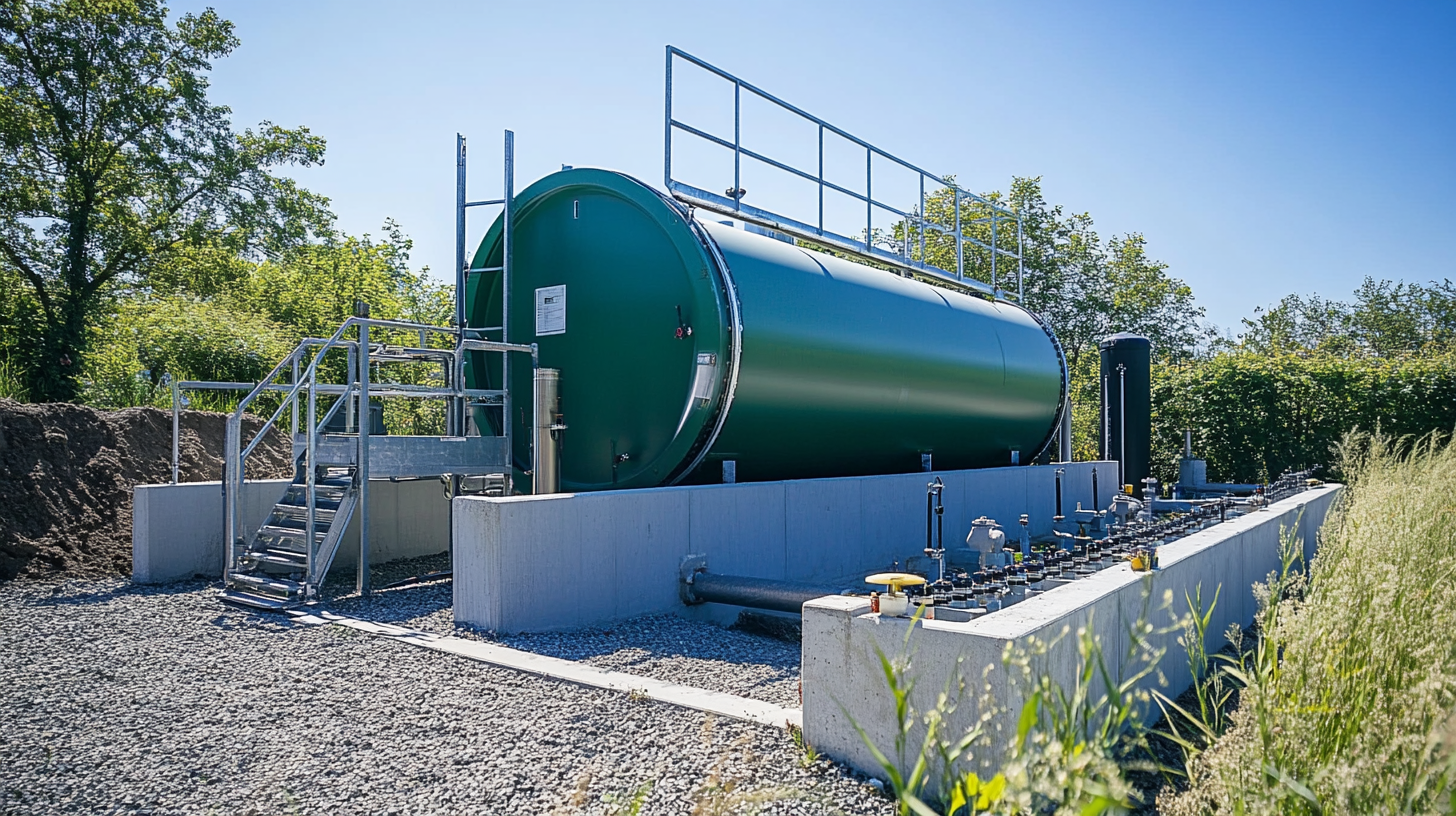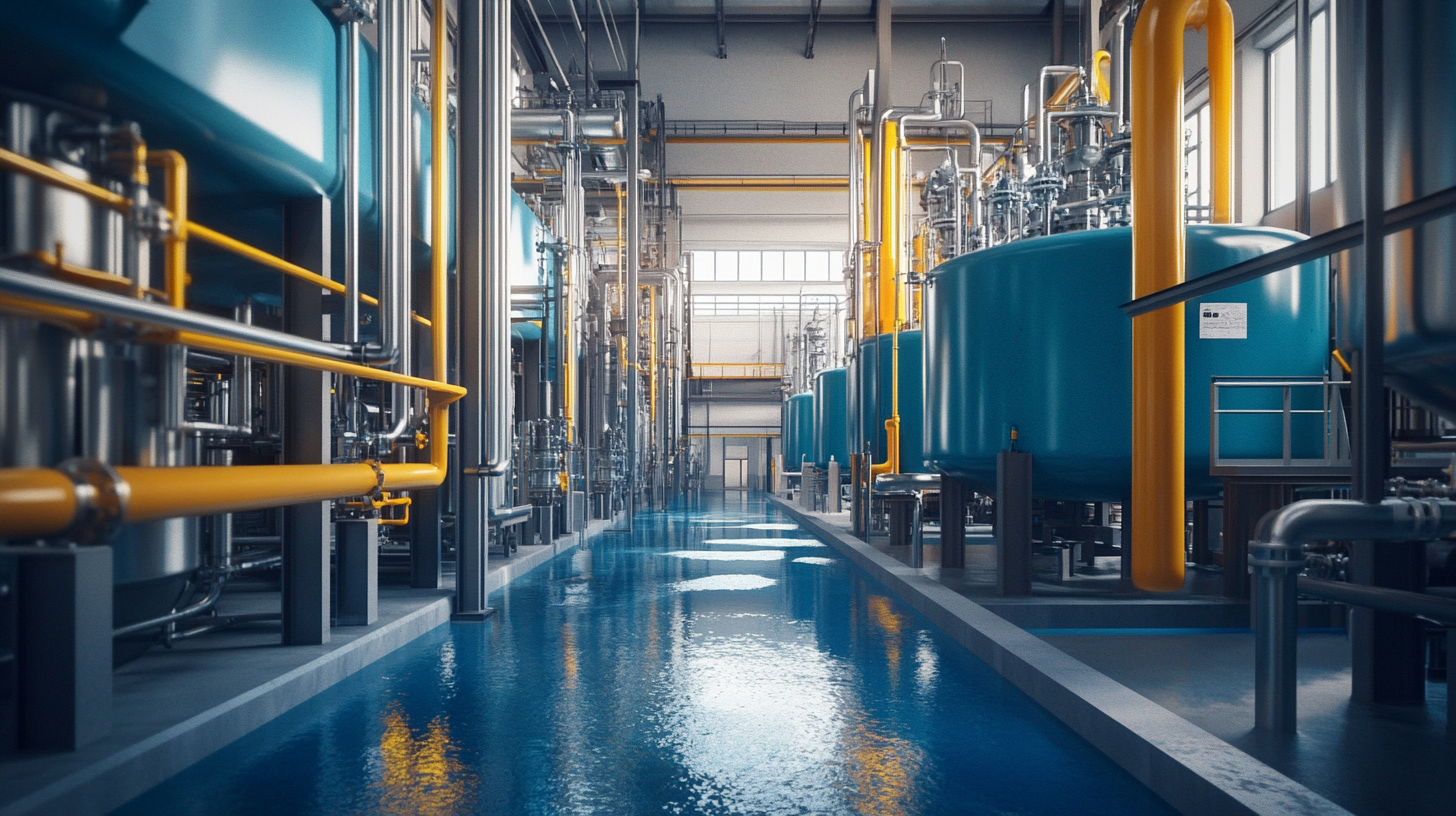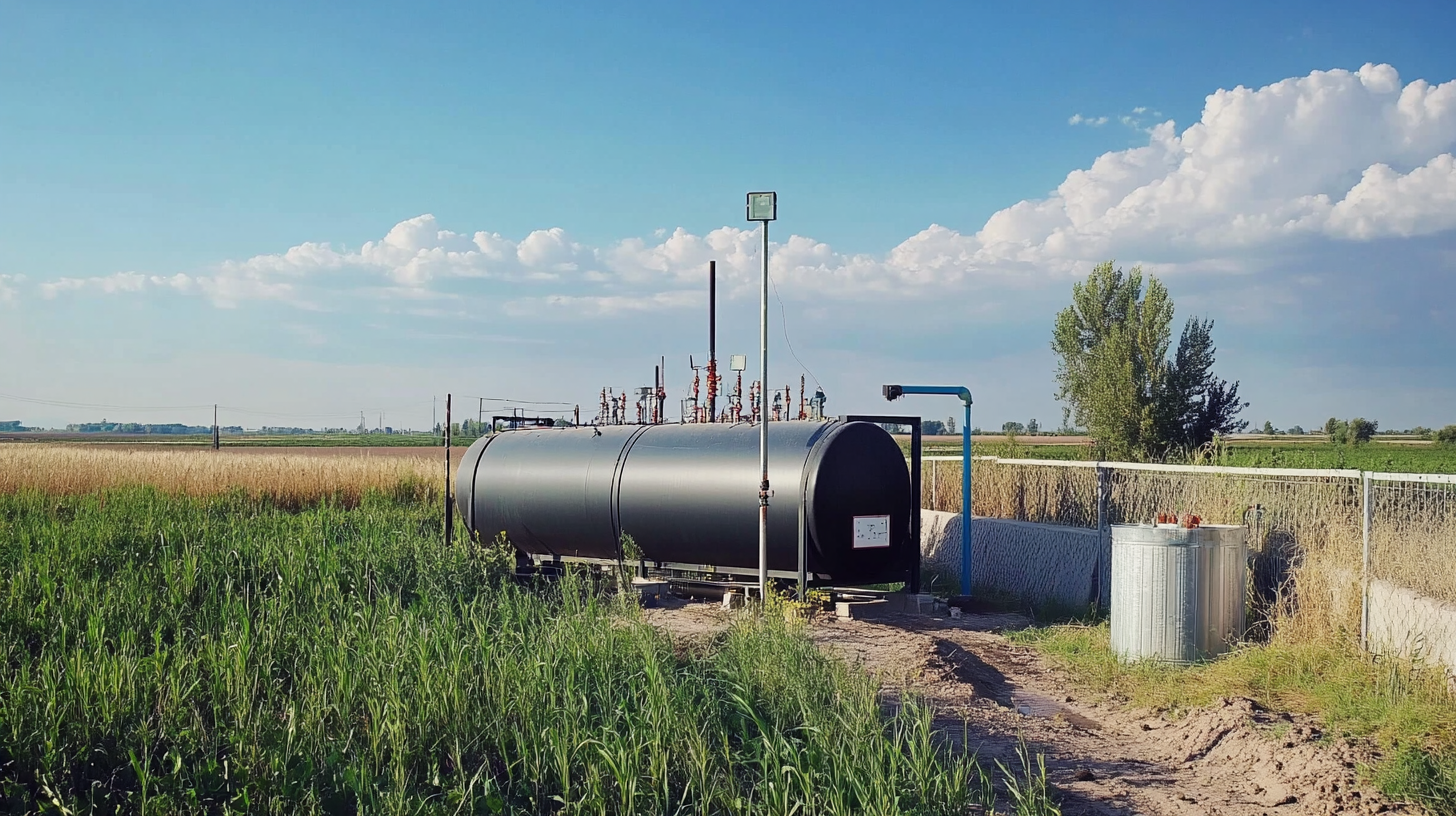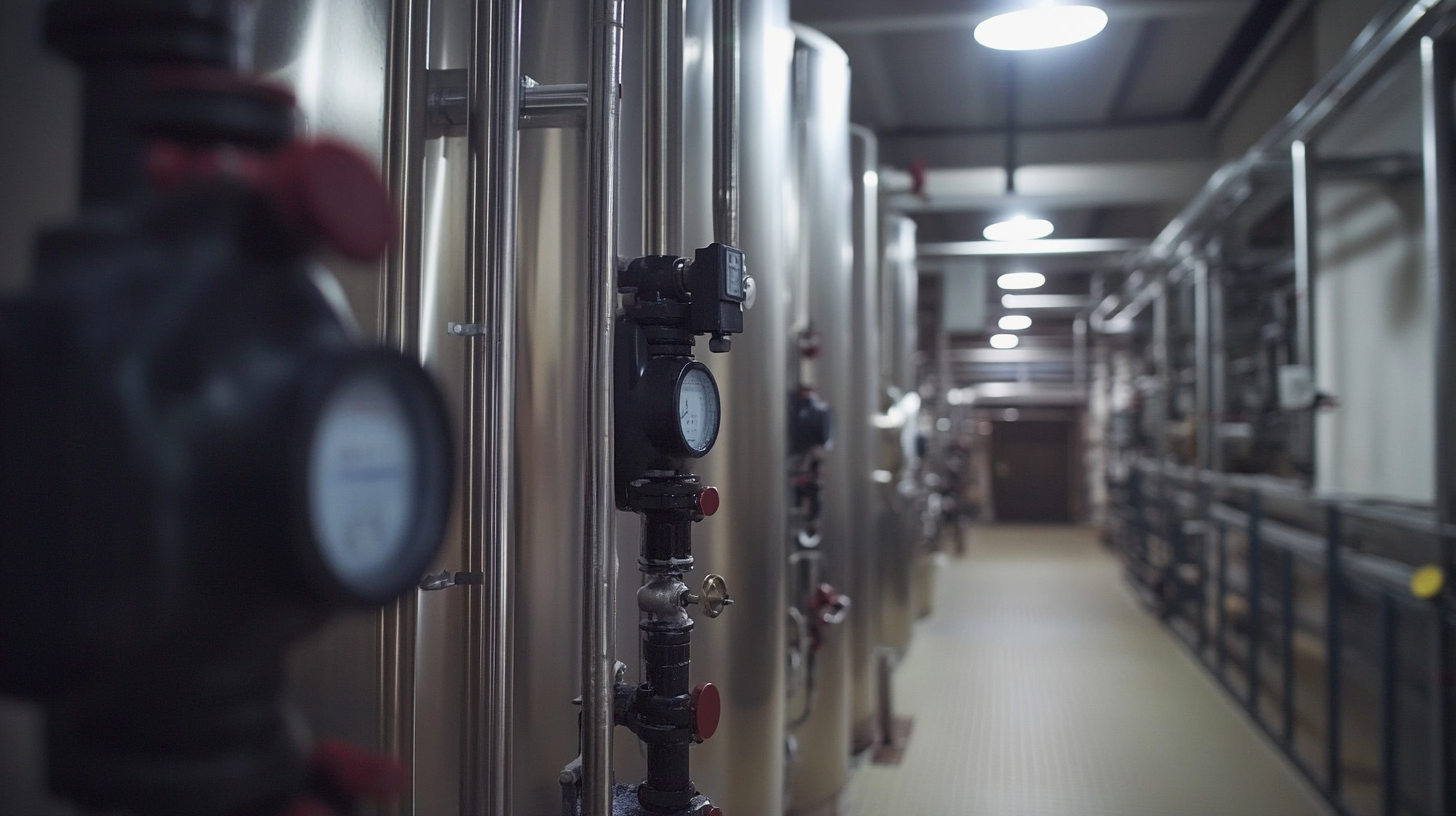As cities continue to swell in population and burden wastewater management systems, the need for more effective sewage treatment has become pressing. Among various treatment technologies, Anaerobic Sewage Treatment has emerged as a sustainable and efficient method of reducing organic pollutants while producing biogas for energy recovery. This reduces the environmental footprint and increases the economic return by transforming waste into a valuable resource.
While chronicled changes in anaerobic sewage treatment techniques will be shared, it will be observed how these traditional processes have evolved into engineered systems with biological processes. From early uses of anaerobic digesters to developments in membrane bioreactors and up-flow anaerobic sludge blankets, each development had a significant role in advancing the performance of sewage treatment. This blog is destined to present insights into history, current practices, and future capabilities for anaerobic sewage treatment, thus establishing its importance in current wastewater management.

The onset of anaerobic treatments is one giant step into the history of wastewater management. The driving force behind investigations into anaerobic processes was, historically, the concern for efficient and sustainable sewage treatment methods. The anaerobic system had remained in the shadows until the very recent past, overshadowed by aerobic systems, when it gained momentum due to its unique qualities: low operational cost and energy demand with the effective treatment of organic wastes. Such appreciation stories emphasized the increasing realization of the need to understand the microbial dynamics in anaerobic areas, which were further established with fresh evidence implying adaptive evolution within anaerobic ciliate groups, contributing positively to the efficiency of treatment systems. Modern studies accentuate the cutting-edge findings of continuing evolution in anaerobic technologies and their applications in several contexts. The persistent effect of zero-valent iron nanoparticles in semi-continuous anaerobic digestion was presented as an example of innovative materials that can mold microbial community dynamics and thus enhance biogas production. Equally, the recent rapid start-up strategies designed for anaerobic ammonia oxidation processes will now shift: An emerging focus on optimizing treatment approaches for low-strength wastewater, an area fast gaining attention as municipalities attempt to accomplish a balance between treatment effectiveness and resource conservation. As changes and developments continue to shape the field and anaerobic treatment processes, grasping this technology's historical and recent advancements remains vital. The genomics have pointed out different avenues linking microbial adaptation with the performance of these systems. Therefore, understanding the synergy that exists between evolutionary biology and wastewater treatment could avail new prospects for widening the horizon for anaerobic technology capabilities in the area of environmental management.

There are many advancements in the field of anaerobic sewage treatment technologies based on some biological key processes that operate the most efficient functionalities of water waste treatment without any use of oxygen. Anaerobic digestion is probably the most important of these processes, as it allows microorganisms to digest organic matter anaerobically. This process uses a consortium of microorganisms, including fermenting bacteria, acetogens, and methanogens: the first ones are responsible for degradation into simple molecules of more complex compounds, and the last ones generate biogas.
The first step in the process of anaerobic digestion consists of fermentation, a process wherein organic substrates-chains of carbohydrate and protein-are converted into volatile fatty acids, alcohols, and gases. By fermentation, processes allow subsequent phases to happen. Volatile fatty acids are taken up by acetogenic bacteria and converted into acetic acid, hydrogen, and carbon dioxide; this acetic is the volatile part used later to produce methane with methanogens.
The synergism among these microorganisms is what makes anaerobic process stable and efficient. Issues such as temperature, pH, and loading rates play major roles in the performance and productivity of these biological communities also. Above all, it is the understanding of such key biological processes, maximum use of the known biological systems, and progress in developing new technologies, which can help further enhance the anaerobic sewage treatment process, into a strong aspect of sustainable wastewater management.

Whenever new ideas and technologies were developed to increase the operational efficiency and sustainability of anaerobic sewage treatment technologies, the technology accelerated change; from the conventional to the state of the-art. Traditional anaerobic treatment methods like septic tanks and anaerobic lagoons have been of necessity in treating wastewater by way of decomposition of organic matter for years. However, their inability to treat very large volumes of wastewater while producing a consistent quality of effluent necessitated the development of even more advanced systems.
Today, the advancements in sewage treatment revolve around Anaerobic Membrane Bioreactor technology, AnMBR integrated anaerobic/aerobic processes. Anaerobic Membrane Bioreactors incorporate both anaerobic digestion and membrane filtration allowing for the solids to be significantly increased while effluent quality is diminished. Therefore, the technology saves land space and maximizes biogas production for energy recovery. Anaerobic treatment processes have improved from the automation of treatment procedures in real-time with such advancements, which enable operators to optimize treatment processes toward better operational efficiency and reduced environmental footprints.
A very significant advancement has been the biotechnology integration into anaerobic treatment processes. The application of strategically selected microbial consortia specifically designed for the peculiarities of the wastewater in question will improve degradation rates and enhance the overall performance of the treatment. Accompanying this development comes the adoption of smart technologies in artificial intelligence and machine learning, thus enhancing the predictive modeling and decision-making process in sewage treatment affairs. With these recent innovations, there has come a paradigm shift in the actual handling of anaerobic sewage treatment facilities, in line with sustainability goals across the globe, and responding to the challenges of cities that burgeoning populations face.

Anaerobic and Aerobic Sewage Treatment Systems treat sewage but have their own advantages and disadvantages. The significant difference is about whether the treatment processes are carried out in the presence or absence of oxygen. Anaerobic treatments are dependent upon anaerobic microorganisms to break down organic matter from waste by generating biogas recoverable as a renewable energy source. It is especially efficient in treating high-strength waste waters because anaerobic treatment consumes less energy and produces much less sludge than aerobic systems.
Aerobic, on the other hand, are anaerobic treatments that rely on the relation of the environment to the aerobic bacteria, which will decompose residues in organic materials under well-oxygenated conditions. High facilities can be achieved in terms of quality of effluents. Most of the time, however, require more energy for aeration, leading to the generation of sludge for removal from the organic pollutants. Moreover, the aerobic processes are sensitive to changes in organic load and temperature, affecting the operational feasibility in changing conditions.
There is a range of factors such as cost of operation, effect on environment, and efficiency in attaining treatment objectives that can be brought to measure the two. Anaerobic ones have become the choice in most cases where energy recovery and sludge production have really been made priorities at stake, while aerobic ones are often the choice for speed in treatment and achieving difficult emission standards. It Should Be understood in the context of particularised qualities of wastewaters and treatment objectives before the most suitable technology can be selected.
According to their needs for sustainable wastewater management solutions, anaerobic sewage treatment technologies presently have a focus that will be rapidly evolving in future. As per the report of Technavio, the global anaerobic digestion market is expected to grow at a compound annual growth rate (CAGR) of 6.2% during 2021 to 2025. The driving forces of growth include increased awareness of environmental sustainability and the necessity for greenhouse gas emissions reduction from wastewater treatment processes.
The next generation of anaerobic sewage treatment expects well-bred bioreactor designs and more improved microbial communities. For example, the combination of membrane technology with traditional anaerobic digesters is likely enhancing the technical and operational efficiency. Research indicates that hybrid approaches can increase biogas production up to 30%, making it possible for some plants to convert further organic matter into renewable energy.
Moreover, further ahead in treatment efficiency improvement are new approaches like the AnMBRs. A recent paper published in the Journal of Environmental Management noted that they are more than just separating solids; they do also reduce treatment facility footprints. As cities grow, such compact systems will be needed to treat increasingly more sewage for the rising populations.
Perhaps the most advanced anaerobic systems today have been enhanced with novel approaches at enhancing microbes. Biodegradation rates of complex organic compounds can occur much more quickly using these lineages of genetically modified organisms combined with specific nutrient additions in order to meet the demands of industries that face ever stricter discharge regulations. With the new wave of zero waste initiatives adopted by big municipalities and industries, these cutting-edge anaerobic technologies would be significant factors in the development of sustainable future plans for sewage treatment.
Anaerobic digestion is a microbial process that breaks down organic matter in the absence of oxygen, involving a consortium of microorganisms like fermenting bacteria, acetogens, and methanogens that degrade complex compounds into simpler molecules, producing biogas as a byproduct.
The stages of anaerobic digestion include fermentation, where organic substrates are broken down into volatile fatty acids, followed by acetogenic bacteria converting these acids into acetic acid, which methanogens then transform into methane.
Temperature, pH, and loading rates significantly influence the performance and productivity of microbial communities in anaerobic sewage treatment, affecting the stability and efficiency of the overall process.
Advancements in anaerobic sewage treatment have shifted from traditional methods like septic tanks to modern innovations such as anaerobic membrane bioreactors (AnMBRs) that enhance efficiency and sustainability, minimize space requirements, and improve biogas production.
AnMBRs combine anaerobic digestion with membrane filtration, allowing for higher removal rates of solids, improved effluent quality, and enhanced biogas production, contributing to energy recovery and operational efficiency.
Anaerobic systems operate in the absence of oxygen and are more energy-efficient, producing less sludge, while aerobic systems use oxygen-rich environments, achieving high effluent quality but requiring more energy and generating larger sludge quantities.
Anaerobic treatment is advantageous for high-strength wastewater as it requires less energy and results in significantly reduced sludge volumes compared to aerobic systems.
Biotechnology enhances anaerobic treatment processes by utilizing specialized microbial consortia tailored for specific wastewater compositions, which boosts degradation rates and overall treatment performance.
The integration of smart technologies like artificial intelligence and machine learning allows for predictive modeling and improved decision-making in sewage treatment operations, optimizing processes and enhancing operational efficiency.
Factors include operational costs, environmental impact, treatment efficiency, wastewater characteristics, and specific treatment goals, with anaerobic systems often preferred for energy recovery and reduced sludge production, while aerobic systems may be favored for rapid treatment and stringent discharge standards.